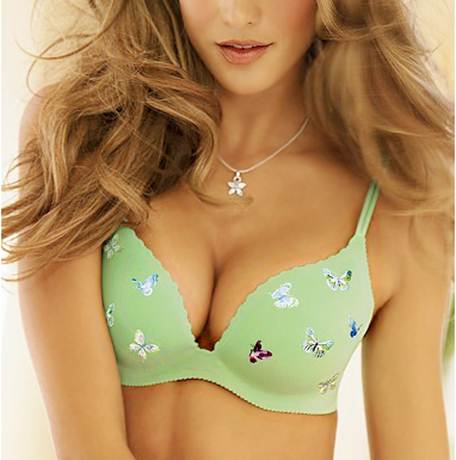The Poly Implant Prothèse (PIP) scandal has
ignited fresh debate over the safety of silicone implants. This is not the
first scare of its kind, and it surely won’t be the last. But do we listen to
the warnings?
Claire Jones has been gifted with an
amazing set of breasts. Full, firm, upward- tilted, they sit against her
ribcage in a deep, creamy curve. She doesn’t look like a woman who’s had work,
or even a woman who’s had good work. She looks like a girl who just happened to
hit the genetic jackpot.

The
Poly Implant Prothèse (PIP) scandal has ignited fresh debate over the safety of
silicone implants.
In fact, Claire bought her breasts. The
27-year-old nurse took out a R54 000 loan in 2007, which she’s still paying
off. And though her surgeon has done a beautiful, barely detectable job, she’s
happy to out herself as having implants: ‘Before, I was a 32AA. I felt like a
boy. I’d wanted my breasts done since I was at school. The first time I saw
them i think i cried! I’d do it again. I’d pay double for it again.’
Claire is one of a new generation of
patients: ordinary working women courted by generous financing deals. Plastic
surgery is now being sold as an essential — a worthwhile investment you can pay
for in increments. Like a car, or a house. In 2011, lending company First
Health Finance reported receiving more than 40 million rands’ worth of
applications for breast augmentation alone. It is SA’s most popular procedure,
and growing year on year.

It
is SA’s most popular procedure, and growing year on year.
As the industry was democratised, so the
secrecy has leached out of proceedings. There’s no longer any need to smuggle
patients through the back door. Not when you’ve got celebrities of Kelly
Rowland’s wattage chatting candidly about their boob jobs during interviews.
‘It’s quite common to talk about it,’ says
34-year-old Daniela Pin, who had breast augmentation after her first child.
‘I’ve had friends disappear from work and come back (days later) saying: “Can
you see any difference on me?” Girls I don’t even know ask. “Have you done your
breasts? Can I have a look?”
But this new openness has also occasioned a
shift in perception. Though it is serious surgery, with serious trappings like
anaesthesia and recovery time, breast augmen -tation is increasingly being
chalked up as no big deal — something akin Botox or teeth whitening. And women
are becoming similarly sanguine about the attendant health scares.

Have
you done your breasts? Can I have a look?
Last year, French company Poly Implant
Prothèse (PIP) was found to have sold sub-standard implants filled with
industrial grade silicone. In doing so, they had saved an estimated €1bn a
year. But these implants come with an increased rupture rate. Patients have
reported pain, inflammation, and in some cases, silicone-filled swellings
hanging from their armpits. Four women have been diagnosed with cancer, two
have already died (though the link is unconfirmed).
Despite this, Claire says she ‘didn’t raise
an eyebrow’ when she heard the news. Asked if she would have been put off the
procedure had the story broken five years ago. She pauses only for a moment:
‘No. not at all. Not if I knew how it’d
make me feel to have them.’ Daniela checked the make of her implants, but says
she hasn’t worried about the broader implications.

‘No.
not at all. Not if I knew how it’d make me feel to have them.’
UK cosmetic surgeon Patrick Mallucci —
perhaps best known for devising a method to quantify attractive breasts — says
he sees this sort of attitude all the time.
‘One thing we’ve learnt is that a woman’s
desire to have breasts, whether bigger or better, is so powerful it will
override any blip or scare. I don’t see any evidence of women saying: “That PIP
looks a bit dodgy, maybe i won’t have my bigger breasts after all.” They will
find something they perceive as safe and they’ll do it.’
A second plastic surgeon, who serves on a
committee on industry standards, spoke to Fairlady on condition of anonymity.
He too has noticed women’s tendency to tune out salutary warnings: ‘Most women
think it’s not going to happen again. They reassure themselves very readily.
Older women with children are slightly more alert and aware of the difficulties
of implants, but women coming in for primary augmentations — their decision
probably won’t be affected.’

That
PIP looks a bit dodgy, maybe i won’t have my bigger breasts after all.”
Though some surgeons have now called for a
ban on the advertising of cosmetic surgery, Mallucci suspects the industry will
be unchanged. He hopes the scandal will lead to tighter manufacturing
regulations and increased scrutiny on suppliers, but concedes that beyond
making sure his materials are coming from CE-certified companies, he never
checks an implant’s provenance.
‘You assume that if you buy a product from
a so-called reputable company, what you’ve been given is up to standard. When
you buy a car, do you check where the steel came from, or where the rubber
carne from? You mustn’t forget that what’s happened to PIP is not a reflection
of the Implant industry. It’s a reflection of the criminal activities of very
few individuals.’
It’s a fair point. PIP’s decision to fill
implants with industrial silicone is an isolated — criminal — incident. It’s
just a pity that when you shake down the evidence, implants made with medical
grade silicone don’t seem that much safer.

You
assume that if you buy a product from a so-called reputable company, what
you’ve been given is up to standard
The US Food and Drug Administration (FDA)
actually banned them in 1992, but backtracked in 2006 after intense industry
lobbying. As early as 2001, published studies showed that women with ruptured
implants had suffered a litany of health problems: fibromyalgia,
dermatomyositis, polymyositis and pulmonary fibrosis. In the same year, the
National Cancer Institute found women with implants were 21% more likely to get
cancer and 100% more likely to die from brain tumours or suicide.
In 2011 , US surgeon Dr Edward Melmed — who
says he’s found micro-droplets of silicone in women’s lymph nodes before now —
told the FDA that implants are an ‘industrial toxin’. He reported that 50% of
patients’ silicone implants rupture after 10 years, 72% after 15 years, and 94%
after 20 years. On this point, suppliers seems to concur: their literature
warns that within a year of breast augmentation, one in four women will need
further surgery.
Clearly, inserting implants is not an exact
science. And until it is, women’s bodies will remain the testing ground.
Whether we like it or not.